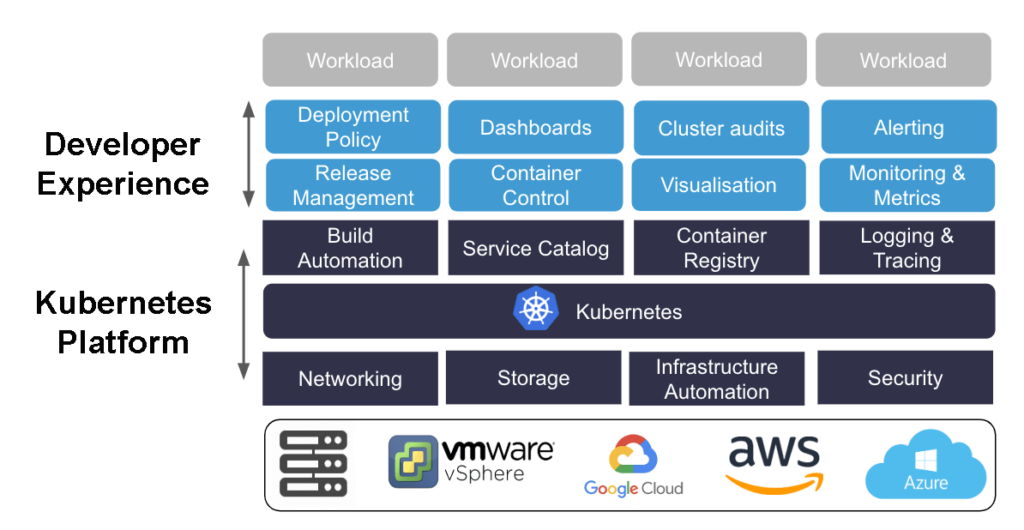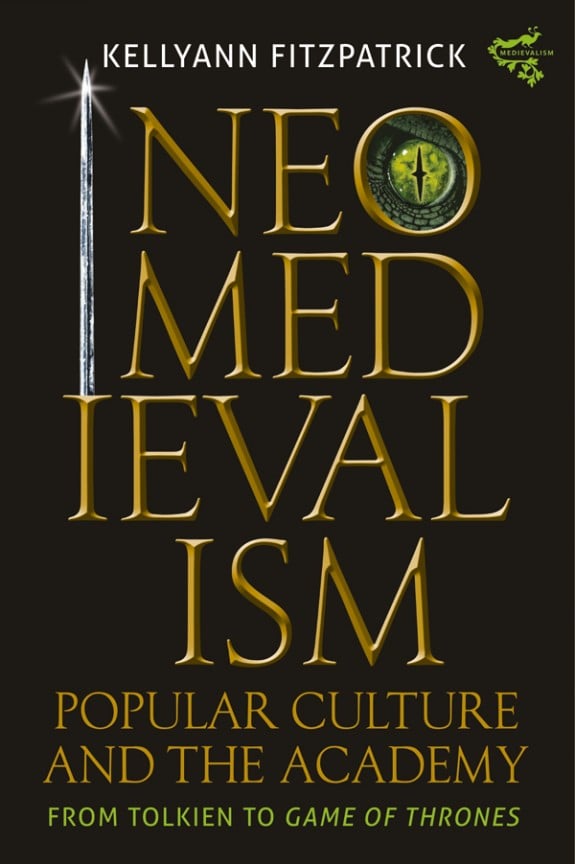
About Weaveworks
Weaveworks was founded in 2014 by Alexis Richardson and Matthias Radestock with the goal of making containers easier to use and manage when building applications.
Weaveworks’s first project was Weave Net for Docker Containers, which was designed to make it easier to manage container networking. It was really well-received and served as a beachhead for more tools to make containers-based apps easier to build and deploy. As the container market matured, Weaveworks focused its efforts on Kubernetes as it became the industry standard for orchestration, helping enterprises to adopt cloud native technologies. The company is now increasingly known for its GitOps approach: the term was invented by CEO Alexis Richardson and has now achieved common parlance in the industry.
In addition to Alexis Richardson (CEO), current Weaveworks leadership includes Steve George (COO), Cornelia Davis (CTO), and Paul Fremantle (VP of Engineering). Offices are located in Berlin, Colorado Springs, London, New York, and San Francisco.
The Weaveworks elevator pitch (per Weaveworks):
Weaveworks empowers enterprises across all industries to unlock cloud agility and customer value with GitOps, a developer-centric operating model for Kubernetes. Founded in 2014, Weaveworks is a founding member of the Cloud Native Computing Foundation and creates and contributes to several open source projects, including Weave Scope, Weave Net, Cortex, Flux, Flagger and eksctl. Our products and services enable teams to design, build and operate their Kubernetes platform at scale. Benefit from repeatable, flexible Kubernetes cluster management across all infrastructure – in the cloud, hybrid clouds and on-premise.
Size
- 80 employees
- Customers in North America, EMEA, MENA, Australia, and New Zealand, include Deutsche Telekom, Ericsson, Fidelity, Tidepool, National Australia Bank, Natwest / Mettle, Global Freight Solutions (GFS), and Automotive Mastermind.
- $56 million total in funding:
- $36 million Series C in December 2020
- $15 million Series B in May 2016
- $5 million Series A in December 2014
On GitOps and Progressive Delivery
Weaveworks CEO Richardson coined the term “GitOps” to describe a pattern of working behavior that he saw his engineers adopt. It was born of SRE skills that some of those employees had picked up at Google, but the team as a whole began to use Git in some interesting ways as the heart of all of its automation and software delivery practices. Git became the single source of truth, and the sorts of automation built around Git and its primitives—such as the pull request—were particularly useful. For example, triggering cluster deployment with a pull request to someone on the team.
So with GitOps, Git is the system of record. Organizations then have a natural audit trail and are able to track system changes by developers and operators. GitOps also takes advantage of the fact that Kubernetes is a declarative system, so the desired state can be described in Git, and then the management platform can meet that state with Kubernetes container orchestration.
GitOps has not only become a foundational to the way Weaveworks itself operates and the products it builds; it has also been enthusiastically adopted by many third parties, and is now an industry term of note.
Weaveworks has also embraced a term introduced by our very own James Governor: Progressive Delivery. Weaveworks engineer Stefan Prodan built a tool called Flagger specifically to solve Progressive Delivery problems with the idea that it would integrate with Kubernetes as an orchestrator for doing Progressive Delivery processes such as canary deployments.
Products
Weave Kubernetes Platform (WKP) is Weaveworks’s flagship Kubernetes management platform. GitOps provides the foundation for both the underlying platform architecture and the developer experience. As a platform, it manages on-premise, hybrid cloud, and multi-cloud cluster environments, with the WKP 2.4 release featuring edge capabilities (the release has been complemented by technical content on Kubernetes at the Edge). The platform promises consistent environments—and therefore portability of applications—across these different spaces, along with the tools and GitOps workflows to provide a consistent development and management experience throughout. Pricing with corresponding support options is offered for Development and Production clusters.
A diagram of the current iteration of the WKP, via the company’s platform overview page:

Weave Cloud provides a platform for building and managing GitOps-based automated pipelines for continuous delivery of Kubernetes-based applications. Designed for DevOps teams, it leverages Git as a single source of truth for application deployments and underlying infrastructure, promising faster and developer-friendly continuous delivery pipelines that integrate with existing CI tools. It also includes monitoring and observability tools. Weave Cloud is a SaaS offering; Standard and Enterprise tiers are available, priced per node on a monthly or annual basis.
Weaveworks also offers consulting and training services.
Projects
A founding member of the Cloud Native Computing Foundation (CNCF), Weaveworks contributes to a number of open source projects (most of which are also leveraged in its products):
- Cortex: a timeseries database, based on Prometheus for Observability
- eksctl: for automating the creation of Amazon Elastic Kubernetes Service (EKS) clusters
- Flagger: a Kubernetes operator for Progressive Delivery, now rolled into Flux.
- Flux: a Kubernetes operator, providing a single tool chain for continuous deployment and fleet-scale automated workflows using GitOps. The basis for Weave’s CI/CD and Progressive Delivery play (see below)
- Ignite: a Firecracker microVM architecture, including Firekube, for running Kubernetes clusters on Firecracker VMs
- Weave Net: for networking containers
- Weave Scope: for monitoring and troubleshooting containers and containerized applications
- wksctl: a CLI for Kubernetes management
GTM and Competitive Landscape
Weaveworks’s GTM focus is on strategic partnerships (such as with public cloud providers like Amazon Web Services (AWS)), open source initiatives, and direct sales. Its reputation as a thought leader in the GitOps space also helps the funnel. Most recently it has built a competence and won customers in the Telco vertical industry space, in particular 5G management. Its most recent funding round reflects that, with investment from Deutsche Telekom, Ericsson, Orange Ventures, and Sonae IM. Containers are becoming the natural deployment and management mechanism for 5G networks, a fast-growing market.
There are three primary GTM plays for Weaveworks:
- Kubernetes management with WKP
- CI/CD, Progressive Delivery, and Pipelines with Flux
- 5G networks
The Kubernetes vendor landscape is as complicated as the CNCF landscape, which is almost a by-word in modern tech for “complexity”. There are hundreds if not thousands of vendors that have entered the Kubernetes space. There are startups at various stages: A, B, C, and even D rounds. There are small regional companies, such as Giant Swarm in Germany or SIGHUP in Italy. There are global leviathan companies—AWS, Google Cloud, and Microsoft—putting forward solutions in this space. Basically, there are competitors all round.
Historically, Weaveworks has worked very closely with AWS (see, for instance, their joint work on the eksctl project). While Weaveworks is the only company we know of that has been invested in by Google, Microsoft, and indeed AWS, the working relationship between Weaveworks and the Amazon EKS folks has been especially interesting in terms of defining the notion of GitOps for on-prem and cloud-based delivery. Customers are increasingly interested in approaches to on premises hybrid approaches to AWS, and Weaveworks has been closely involved in joint engineering projects there, for example with its Firekube project, which is based on AWS’s Firecracker open source project.
Also on the hybrid deployment side, Weaveworks faces competition from classic infrastructure vendors such as IBM/Red Hat (OpenShift) and VMware (Tanzu). Other entrants include Rancher, recently acquired by SuSE, with a strong play around Kubernetes platforms, particularly on the on-prem and hybrid side (with increasing noise around edge).
Enterprises globally are looking to improve, optimize and modernize their software delivery pipelines. From a continuous delivery perspective, do-it-yourself and Jenkins-based systems compete with newer cloud native and hosted offerings. Flux is Weaveworks’s play in this market for CI/CD leadership.
Competition comes from vendors as varied as CloudBees (with its JenkinsX play for microservices), Harness, GitHub, GitLab, CircleCI, Codefresh, and Jetbrains TeamCity. Throw in the plethora of monitoring and observability vendors in the cloud native space, and the landscape becomes even more complicated: Dynatrace, for example, has expanded its offerings to include what it calls “cloud automation” capabilities based on its own Keptn project.
On the 5G side, Weaveworks has a differentiated story and initial customer traction. Telcos are a huge market in their own right. 5G base stations are far more software-driven than previous network generations, which means sophisticated architectures are required to span back end services and base stations. Hashicorp has also made some inroads here.
The Kubernetes landscape promises to become standardized in terms of infrastructure categories over the next two to three years (just as we saw in the big Java middleware wave from 2000 onwards), and we expect to see more specialization in terms of user roles. It’s not realistic to expect all practitioners to be developers, operators, and SREs: to understand every single technology in a stack. So vendors will reposition accordingly, building platforms to suit developer or operator personae.
Weaveworks is positioning itself to improve both developer and operator experience with GitOps, allowing developer productivity and flow, but also operator compliance and controls. It should be able to sell to both developer experience and platform ops teams.
Disclosure: Weaveworks is a RedMonk client, but this is an independent piece of research that has not been commissioned by the client. AWS, CircleCI, the CNCF (via the Linux Foundation), CloudBees, Dynatrace, GitHub, GitLab, Google Cloud, Hashicorp, IBM, Microsoft, Red Hat, and VMWare are also RedMonk clients.
Related posts:

No Comments